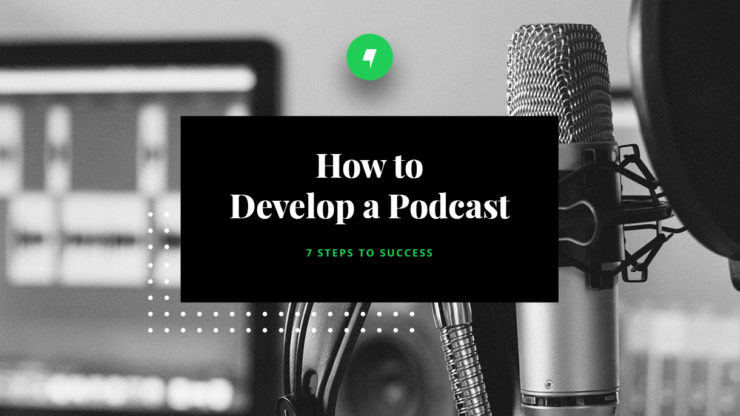We recently wrote about the benefits of creating a podcast. With the podcast industry exploding, now might be the time to explore starting your own. If so, here are seven recommended steps to get you going:
Step 1: Create a strategy and write it down
Your strategy should include everything from podcast name, topic, format, length and art to topic and target audience. Do your due diligence to ensure your chosen topic isn’t one already being covered, or that you have a creative, new way to cover a common topic. The topic should be one that you are passionate about and have a lot of potential content for. Another element of the strategy is to determine the format. The most popular formats are either an interview-style or solo. As you strategize, remember podcast length is important, the sweet spot is 20 minutes. Whatever length you choose, try to keep each episode around that length to create consistency for your listeners.
Step 2: Get the equipment
You will need a computer, podcasting microphone, pop filter, mic stands, shock mount, headphones, headphone amplifier, audio interface, mixer, cables and audio editing software. A lot of this can be purchased through an inexpensive bundle. If you are planning on interviewing people that cannot physically be in the studio with you, make sure to secure call recording software.
Step 3: Decide what podcast directory you will be submitting to
Choose the podcast directory you would like your podcast to live on. Some common platforms are Spotify and Apple Podcasts. Just make sure to read their submission guidelines to figure out what is the best fit for your topic and audience.
Step 4: Executing and recording your podcasts
Plan on recording your intro and outro first, before developing your first episode. The intro and outro will be boilerplate for the most part and will help you get a sense of the voice and direction of the podcast. Before recording an episode, it is helpful to have a script, topic outline or questions if you are interviewing someone.
When recording, make sure you setup in a quite area, all the required software is hooked up and works properly, and launch the recording software to make sure the mic is the default input device. Now you are ready to start recording. I recommend a couple of checks to make sure everything is working properly. Once you start recording, it is okay if you make mistakes, either keep going or take a pause and rerecord. The editing process will take care of any mistakes and tighten up the podcast.
While recording, make sure you have some water near you, be yourself, do not rush or be nervous, and most importantly have fun! After the podcast is done, save the podcast as an MP3 file. Now you are ready to edit.
Step 5: Editing a Podcast
When it’s time to start editing, make sure you have editing software. Some common editing platforms are Audacity (free), GarageBand (free) and Adobe Premiere Pro (fee). During the editing process you want to have clear audio, consistent volume levels, no gaps or long pauses and minimal background noises.
Step 6: Find a host
Now that you have a complete podcast and are ready to post you will have to find a podcast host, some are free, and some have a low monthly cost. Hosting allows your podcast to live on different podcast directories such as Spotify or Apple Podcasts. Some hosts you can consider are SoundCloud, Podbean, Podomatic and many others. Choose one that supports the bandwidth you plan on using monthly.
Step 7: Promote, promote, promote
Your podcast is finally live and available for subscribers to listen. It’s time to implement a strategy that includes promoting via social media channels, website landing page, posting teasers, update social media bios and send out a newsletter alert if you have one. The goal is to foster engagement by giving shoutouts, a giveaway or even develop a name for your listeners.
Now that you have a successful, fully functioning podcast, make sure to have a regular schedule of episodes. Happy podcasting!
Posted In Content Marketing
